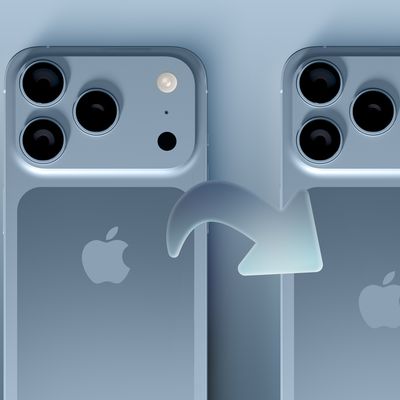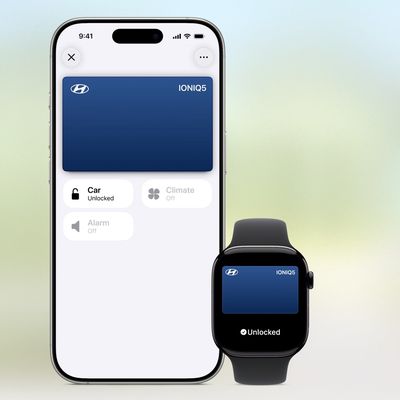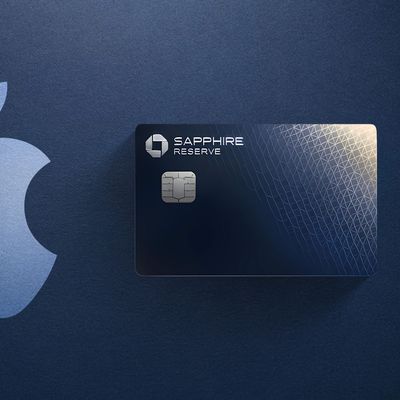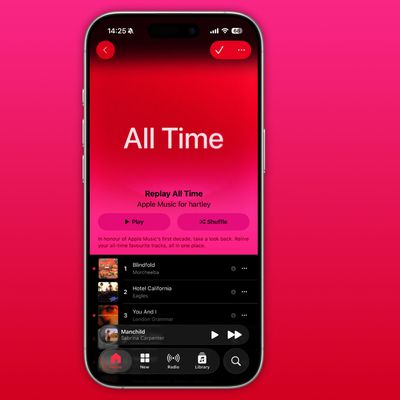Financial Times Won't Give Apple A Cut, Drops iOS for Web App
The Financial Times, a major business newspaper, has decided to drop its iOS app in favor of an HTML5 based web app specifically designed for the iPhone and iPad. The move is in response to Apple's new App Store Subscription requirements that state Apple must get a 30% cut of any subscription sold on iTunes and that publications must offer subscriptions through the App Store.

In a email to subscribers today, the FT didn't mention the App Store at all, instead touting "valuable improvements" including claims that the web app will be faster and more up-to-date. The interesting part came when the email mentioned the existing app (emphasis added):
Although the old app may still be available for an interim period, we encourage you to switch to the new app as soon as possible. The new app is now the focus of our development efforts and we'll be adding a series of new features, including special reports, over the coming months.
Actually, neither the Financial Times nor anyone else knows what is going to happen at the end of the month to subscription-based apps that don't align with Apple's App Store guidelines. The deadline for subscription based apps to roll out their offerings is June 30. Quoted in the New York Times, Rob Grimshaw, managing director of FT.com said:
We don't quite know what will happen ... we'd love to keep our app in iTunes, but it may be that they will block our app at the end of the month.
They might not know what's going to happen if they don't play ball, but it's Apple's sandbox and the FT isn't sitting around idly. The new web app seems to be very similar to the current iOS App and thus may be able to provide a very similar experience without having to share revenue with Apple. The Financial Times' loyal readership is likely to follow the publication to its web app in significant numbers, meaning that the FT may not be missing out on much by bypassing iTunes.
As the first major publication to drop its iOS app over Apple's subscription guidelines, the FT might just encourage other publications to make the same move. Ben Evans notes, however, that the grass isn't always greener on the other side:
The challenge for other publishers in following the FT is that by doing so, they gain 30% but lose frictionless installs from the app store and frictionless payment from iTunes. For the FT, with a dedicated readership willing to pay, it may be worth giving those things up in exchange for the ability to offer a true cross-platform experience. But if you're depending on impulse download, the tablet experience and the ease of payment to get people to pay for your product where they never paid before, paying Apple 30% of something may be better than keeping 100% of nothing.
Popular Stories
Apple's next-generation iPhone 17 Pro and iPhone 17 Pro Max are less than three months away, and there are plenty of rumors about the devices.
Apple is expected to launch the iPhone 17, iPhone 17 Air, iPhone 17 Pro, and iPhone 17 Pro Max in September this year.
Below, we recap key changes rumored for the iPhone 17 Pro models:Aluminum frame: iPhone 17 Pro models are rumored to have an...
Apple is developing a MacBook with the A18 Pro chip, according to findings in backend code uncovered by MacRumors.
Earlier today, Apple analyst Ming-Chi Kuo reported that Apple is planning to launch a low-cost MacBook powered by an iPhone chip. The machine is expected to feature a 13-inch display, the A18 Pro chip, and color options that include silver, blue, pink, and yellow.
MacRumors...
In 2020, Apple added a digital car key feature to its Wallet app, allowing users to lock, unlock, and start a compatible vehicle with an iPhone or Apple Watch. The feature is currently offered by select automakers, including Audi, BMW, Hyundai, Kia, Genesis, Mercedes-Benz, Volvo, and a handful of others, and it is set to expand further.
During its WWDC 2025 keynote, Apple said that 13...
Apple hasn't updated the AirPods Pro since 2022, and the earbuds are due for a refresh. We're counting on a new model this year, and we've seen several hints of new AirPods tucked away in Apple's code. Rumors suggest that Apple has some exciting new features planned that will make it worthwhile to upgrade to the latest model.
Subscribe to the MacRumors YouTube channel for more videos.
Heal...
Apple is planning to launch a low-cost MacBook powered by an iPhone chip, according to Apple analyst Ming-Chi Kuo.
In an article published on X, Kuo explained that the device will feature a 13-inch display and the A18 Pro chip, making it the first Mac powered by an iPhone chip. The A18 Pro chip debuted in the iPhone 16 Pro last year. To date, all Apple silicon Macs have contained M-series...
Popular accessory maker Anker this month launched two separate recalls for its power banks, some of which may be a fire risk.
The first recall affects Anker PowerCore 10000 Power Banks sold between June 1, 2016 and December 31, 2022 in the United States. Anker says that these power banks have a "potential issue" with the battery inside, which can lead to overheating, melting of plastic...
Chase this week announced a series of new perks for its premium Sapphire Reserve credit card, and one of them is for a pair of Apple services.
Specifically, the credit card now offers complimentary annual subscriptions to Apple TV+ and Apple Music, a value of up to $250 per year.
If you are already paying for Apple TV+ and/or Apple Music directly through Apple, those subscriptions will...
As part of its 10-year celebrations of Apple Music, Apple today released an all-new personalized playlist that collates your entire listening history.
The playlist, called "Replay All Time," expands on Apple Music's existing Replay features. Previously, users could only see their top songs for each individual calendar year that they've been subscribed to Apple Music, but now, Replay All...






















